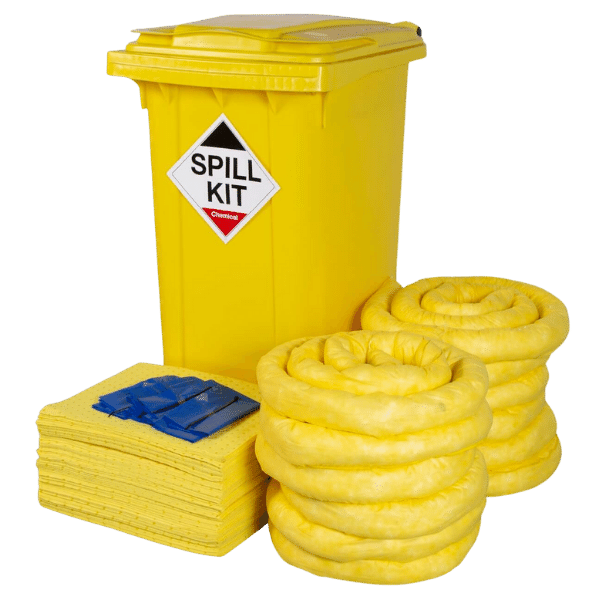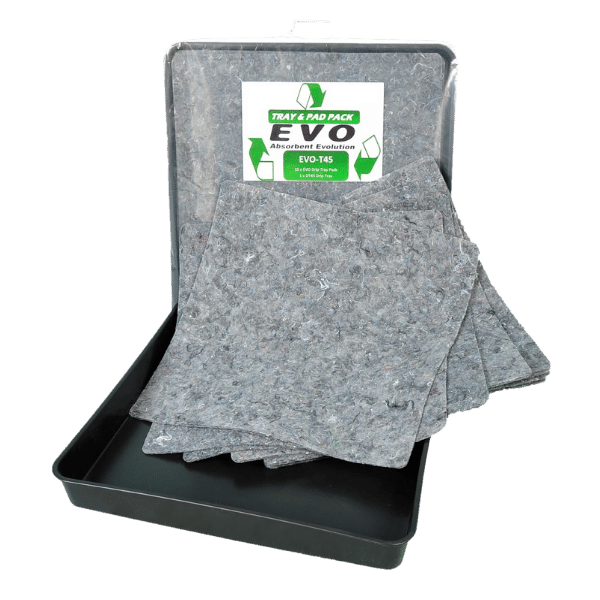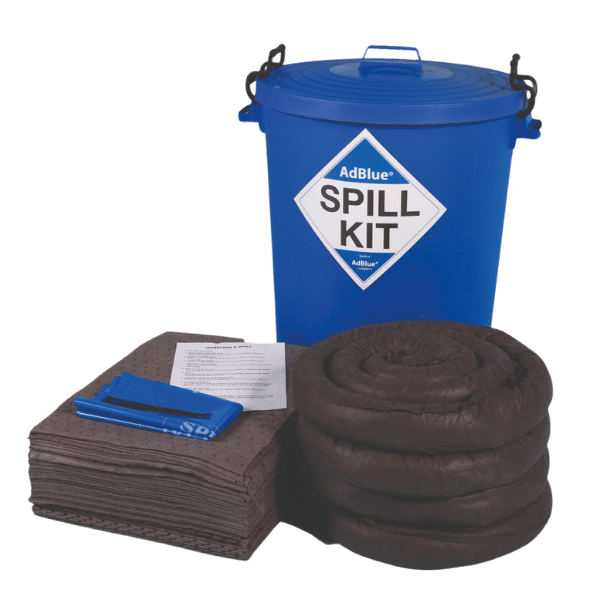Workplace oil spills are more than just an inconvenient mess; they present serious risks to employee safety and the environment. Several pieces of legislation in the UK, such as the...
Spill Kits
Our complete range of Spill Kits for industrial workplaces. All of our Spill Response Kits contain fast-acting absorbent materials that work with Oils, Fuels, Coolants and Chemicals. Spill Kits are available in various sizes, from 20-litre kits to soak up minor spills to 240-litre spill kits for warehouses and factories.
Best Sellers in Spill Kits


If you store or work with oils, chemicals, and other potentially hazardous liquids, Spill Kits are essential for your workplace. Each kit contains the materials needed to quickly deal with liquid spills, preventing contamination and risks to the workforce.
Our range of UK-made spill response kits is designed to handle everything from minor spills of hydraulic oil to large spills of chemicals and dangerous materials. Our customer service team can provide expert advice, and we offer fast delivery on all orders. Look no further than our emergency spill kits to protect your workplace from spill accidents.
What are Spill Kits?
Spill Kits are essential Spill Control Products used in warehouses and factories where oils, fuels, chemicals and other industrial fluids are stored. They aim to help contain unexpected spills in an emergency by quickly containing and absorbing the spill. Placing these spill kits around the workplace should be part of the spill management techniques used to improve safety for everyone.

Spill kits contain various absorbent materials, each designed to work with specific fluid types and disposal bags to dispose of used absorbents safely. Each kit is stored in a bag or a plastic drum for quick access when a spill happens.
Spill Kit Sizes
Within our range are various sizes, all based on the volume of fluid that can be absorbed. These range from shoulder bags that absorb 50 litres of liquid to 240 litres in wheelie bins. We also stock pads and socks individually for minor spillages; please see our absorbent pads and socks range for these products.
We recommend that you have provisions to contain at least 25% of the volume of liquid stored so that multiple kits can be used together for larger volumes.
How To Choose The Right Spill Kit
Using the correct spill kit is vital to ensure safe and effective spill control in your workplace. As with other types of spill management equipment, such as absorbent pads and stocks, the colour of the materials indicates the kinds of liquid each kit is compatible with.
- Oil Spill Kits: Typically containing white-coloured absorbents, these selective spill kits are designed exclusively for Oils, Fuels and other Hydrocarbons. Their clever design means they only absorb oils while water is repelled and flows off the surface. This is especially useful if the oil spill occurs outdoors or has contaminated water, as these oil and fuel spill kits can remove the oil without becoming saturated with water.
- Universal Spill Kits: With their distinctive grey-coloured absorbents, these general-purpose kits do not have selective properties, making them the perfect solution for any workplace storing oils and water-based liquids like coolants. They are made from 85% recycled cotton fibres, making them incredibly effective as an absorbent material. As they can absorb oils, coolants, solvents, and other liquids, they are a highly versatile type of spill response equipment, and represent the most environmentally friendly option.
- Chemical Spill Kits: Chemical spill management can be a challenge for many workplaces, but these kits, with their distinctive yellow-coloured absorbents, make the task a little easier. As a rule of thumb, if the liquid contains labels that suggest a fluid is harmful if it makes contact with skin (usually on a yellow label), then only a chemical spill kit should be used. The absorbent materials are specially designed not to break down when used with acids, alkalis and other chemicals.
What To Do With Used Spill Kits?
Once your spill kit has been used, it should be considered hazardous waste and disposed of as such. Each kit contains bags for disposal, which should be securely sealed. As for the plastic drum that the absorbents are contained in, this can be reused. To make it easy to do this, we also stock refill packs of new absorbent materials for each kit so that you can easily top up your supplies.
As a tip, we recommend that spill kits be tagged and sealed when new. This way, you can easily see if a kit has been opened and used during inspections rather than waiting until a spill occurs before finding out.
Related Products
At First Mats, we stock a wide range of spill response equipment, including pads, socks, and other spill absorbents for the workplace. If you have any questions or need guidance on spill management equipment, please don't hesitate to contact our friendly and helpful team.
Further Reading for Spill Kits
ISO 14001 certification is a globally recognised standard for implementing an effective environmental management system. It is designed to help organisations reduce their environmental impact, manage resources more efficiently, and...
Spill control is, or should be, a strong focus of any industrial site’s health, safety, and environmental policies. Whether you’re new to the world of spill control or need updating on...
If you’ve ever had to clean up spilt engine oil in the garage at home, you’ll know that using ordinary rags or cloths can be a dirty, slow job. That may be OK...
























































